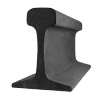DCC4PC RailCom Standalone Cutout Device
The initial design brief for this circuit was to produce a fully spec compliant DCC cutout so as to allow non-RailCom-enabled hardware to function in a RailCom-enabled environment.
Features:
Takes in a DCC signal and corrects any anomalies so as to generate a fully DCC compliant output. Deformities in the DCC signal will be filtered out by this device. Examples include: Asymmetric signals, ringing and distorted square waves. Unfortunately timing errors can't be fixed, however if they are present then this will be indicated by the DCC LED turning red. In the future, our programmable booster will also be able to fix timing errors.
The initial design brief for this circuit was to produce a fully spec compliant DCC cutout so as to allow non-RailCom-enabled hardware to function in a RailCom-enabled environment.
Features:
Takes in a DCC signal and corrects any anomalies so as to generate a fully DCC compliant output. Deformities in the DCC signal will be filtered out by this device. Examples include: Asymmetric signals, ringing and distorted square waves. Unfortunately timing errors can't be fixed, however if they are present then this will be indicated by the DCC LED turning red. In the future, our programmable booster will also be able to fix timing errors.
- If your system already produces a cutout, but you have equipment such as point accessory decoders or turntable controllers which display anomalous behavior in the presence of a RailCom cutout, this circuit can be used to selectively remove an existing cutout specifically for those devices.
- If your command station or booster is unable to produce a cutout, this circuit can introduce a cutout, enabling you to make use of the features of a RailCom system. This is dependent on the number of preamble bits generated by your command station. The DCC specification mandates a minimum of 14 preamble bits, so if this is all your hardware produces, then only a short cutout can be produced, but with 16 or more preamble bits a long cutout is possible which will enable you to benefit from all the features of RailCom.
- This circuit will give you short-circuit protection set to 5A. If the D and E connections are connected to the D and E terminals of your command station, then the cutout device will notify your command station of short-circuit events when they occur.
- The cutout device has practically no delay between a change in the incoming signal, and the same change appearing at the output. This makes it possible for a locomotive to move from a cutout-enabled track section to a non-cutout-enabled track section without causing a short-circuit.



